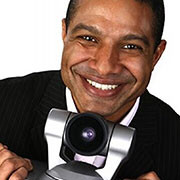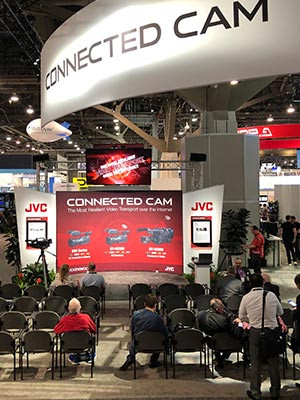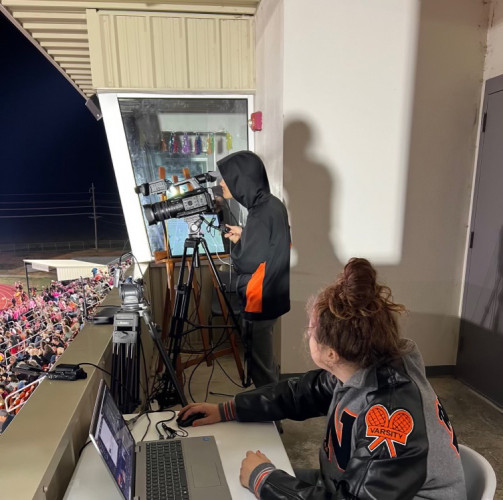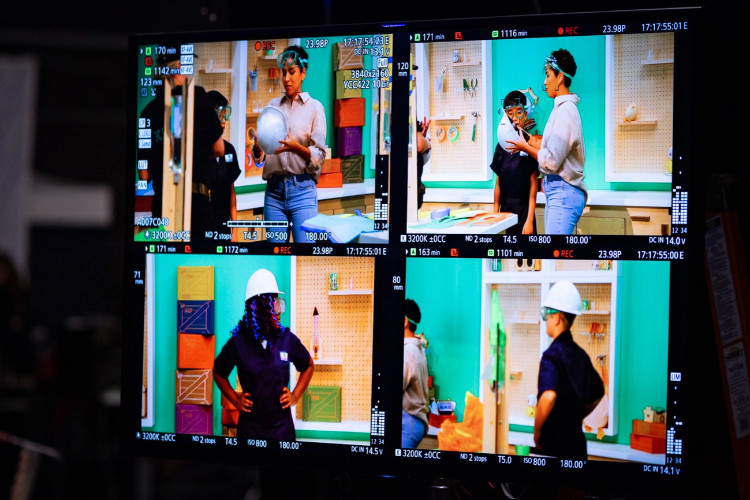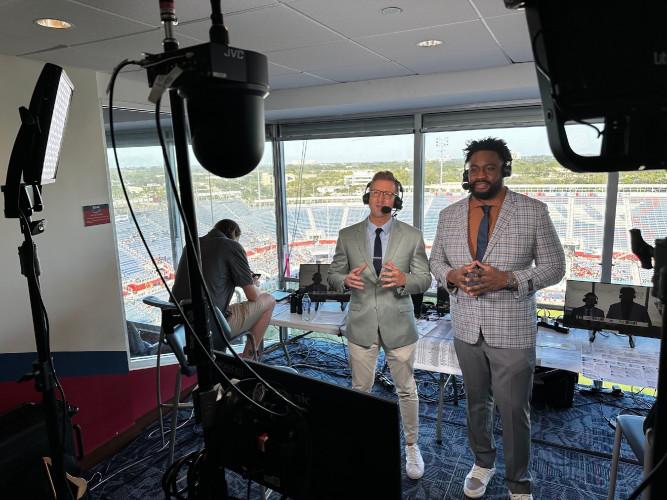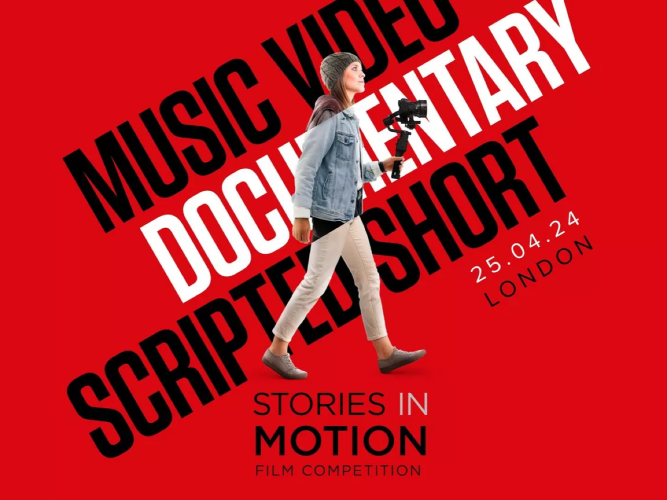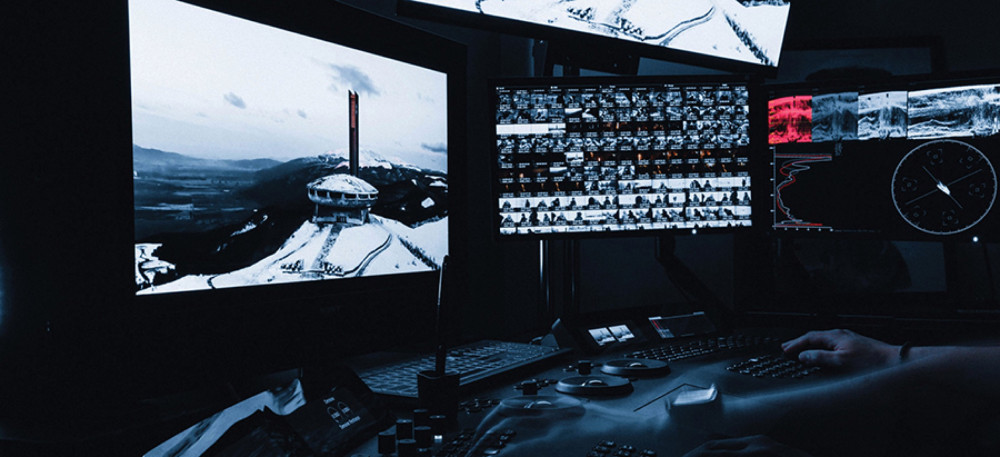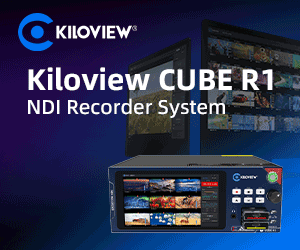The NAB Show in Las Vegas never loses its capacity to surprise. With NHK already transmitting in 8K and the Tokyo Olympics just a year away, this might have been the year that 8K equipment prices descended from the stratosphere to just plain expensive. The main trends at NAB 2019 were an increasing focus on HD-HDR, Media-over-IP and 4K. 8K was pretty low key except for a very promising demo on the Sharp stand: an extremely compact 8K camera at an impressively low price point: $4,000. Shooting at 30 frames per second to an internal card and using a prosumer-style Olympus lens, it looked very much an entry-level product but one with phenomenal potential for any videographer looking to work with very large display screen sizes.
Big screens are coming too. Biggest to date is a 32:9 aspect ratio 16K display measuring 19.2 metres wide by 5.4 metres, Sony announced at NAB. The display uses the company's Crystal LED concept which allows screens of practically any size to be assembled from seamlessly bonded tiles.
The initial market for any television standard beyond 4K is likely to be the audiovisual sector: teleconferencing, digital signage, corporate promotion and public-event screening. Sony's first 16K screen is being installed as a showpiece to the newly completed research centre of a Japanese cosmetics company, Shiseido.
Canon introduced four new professional 4K camcorders. The XA50 and XA55 have a 1-inch CMOS sensor and 15x optical zoom. Also announced was a consumer model, the HF G60, again with a 1-inch CMOS sensor and 15x optical zoom.
HuddleCam exhibited the latest addition to its range of remotely controllable cameras. The 1080p model 3X has an 82 degree field of view and 3x optical zoom. It can perform 359 degrees of pan, 90 degrees of up-tilt and 45 degrees of down-tilt. The 3X is designed to be fast and easy to use with 64 presets and USB2 connectivity to a Mac or PC.
JVC focused on what it termed 'Connected Cam' with new 4K broadcast cameras equipped for video over IP. The GY-HC550 is a compact model which can be used on a tripod or hand-held. The larger GY-HC900 is a full-featured model intended for shoulder operation.
Leyard has been active in the 8K video wall business for several years and showed its latest offering at NAB 2019: the TVF series which supports HDR. Also exhibited were the The Leyard LED MultiTouch and the Planar EPX Series are touch screen displays that can help broadcasters create interactive on-air presentations.
Panasonic demonstrated its new AW-UE150 PTZ 4K-UHD/2K-HD camera. Designed for studio operation, this has a large MOS sensor, a 75.1 degree viewing angle and 20x optical zoom. Outputs include 4K 50p 12G-SDI, HDMI, optical fibre and IP.
Samsung showed its latest QLED 8K Signage high-brightness display which used AI-enhanced upscaling. The new display at less than 4 cm deep and uses a combination or local dimming and 'Quantum Light Control'. Samsung also promoted the open-standard HDR10+ protocol which it developed in cooperation with Amazon. HDR10+ uses dynamic metadata to adjust brightness levels on a scene-by-scene or frame-by-frame basis.
Zoom demonstrated its LiveTrakL-20 digital audio mixer/recorder, capable of recording 22 audio tracks simultaneously. Features include 20 mixing channels (16 mono plus 2 stereo) with XLR and 1/4-inch connectivity, 20-track simultaneous playback, 48 volt phantom power on each input, a pre-record function and automatic recording start/stop. A 12-input version with 14-track simultaneous recording (Model L-12) is also available. Both models record to SD card and include USB 2.0 import/export ports.
One of the highlights of the parallel NAB conference was a paper by Olie Baumann of Mediakind on the subject of live 360 degree surround video delivery:
"360 degree video leverages much of the technology developed for VR gaming but differs in the way it is generated and delivered. Specifically, 360 degree video capture, delivery and rendering can be performed live, allowing operators to give consumers the sense of being at a sporting or live music event. With creative camera placement and production, the end user can have an experience that would not be possible even with a ticket. We have experimented with 360 degree cameras mounted on the car for motorsport events and mounted immediately behind the basket at a basketball game, allowing the viewer a unique perspective on the event."
"In order to deliver a high quality video experience, the resolution of the 360 degree image needs to be very high by current broadcast standards. An HD resolution headset or phone will display a small section of the entire video known as the viewport. To ensure that the full 360 degree image does not limit the displayed resolution it must have a resolution of at least 8K × 4K or the equivalent of sixteen HD broadcast videos."
"We need to be able to deliver it to mobile devices such as phones and tablets which, at the time of writing, don’t have real-time 8K decoders on board. The use of a tile-based streaming solution has many advantages. Not only does it meet the bandwidth and decoder requirements necessary to allow consumption on mobile devices but it also lends itself to cost effective encoding on cloud platforms. This in turn means that the encode can be elastically scaled to handle any resolution, frame rate and number of channels which will surely be necessary to keep up with advances in display and head mounted device technology."
Quite a challenge and certainly a technology to keep an eye on.



